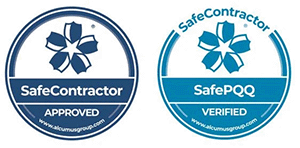In mid-December 2017, a bitcoin would have seemed like a good (and generous) Christmas present, with its value soaring at £15,000. By Christmas Day, though, it was falling, and by late January it had crashed. A few weeks ago, you could still have bought one for less than £4,000. But at the time of writing the price is more than £6,000. Oh, for a time machine!
It’s not just fancy new crypto-currencies that can be unpredictable that way. Even something as stable as a building varies in value, and not just because of the vagaries of the property market. The cost of physically re-building it also subject to change, as you’ll see if you consult the Building Cost Information Service (BCIS), which tracks tender price indexes, regional factors and upper and lower quartiles with respect to fit-out and other factors. Why would anyone want to do that? One word: insurance.
To have your building insured for the right amount, it’s vital that you regularly have what’s called a Reinstatement Cost Assessment (RCA) to ascertain what that amount is. The good news is you don’t have to pore over the BCIS data yourself. A building surveyor can do it for you! In fact, given all the other complicated factors involved – levels of fit-out, local planning factors, new legislation – you really need a professional to come up with an accurate figure. And at Earl Kendrick, we’ve recently relaunched our RCA service with a dedicated team in response to growing demand. So why does this matter?
Well, according to the BCIS General Building Cost Index, a building costing £100,000 to build in 1985 would now cost £359,600. If the figure insured has not been updated, the pay-out in the case of a devastating fire will be nowhere near enough to cover the cost of rebuilding. But what about a shorter timescale? Surely, not much will have changed since December 2017 when Bitcoin was last at its height?
In fact, the figure then would have been £343,000, £16,600 short. That’s bad enough, but imagine you had last had an RCA done in May 2009. Of course, a decent insurance broker would have updated the figure in line with inflation. So if the building was valued at £250,000 in May 2009, your inflation-adjusted figure would have been 31% more at £327,523 in May 2018. Probably sounds about right to an insurance broker?
Wrong! Construction costs do not follow inflation exactly. The BCIS Index has only risen 22.2% since then, so the building would only cost £305,418 to rebuild. In fact, in some depressed areas of the country at the moment, it’s cheaper to build in 2019 than it was in 2016. The risks to over-valuing declared values may not appear immediately obvious, but it will increase your insurance premium to a higher value, incurring unnecessary costs. And if you under-insure your building, the insurer will cap any pay-out to the percentage by which the building has been under-insured. A block of flats with a true cost assessment of £20m, but a declared value of £16m is 20% under-insured. A £200,000 insurance claim for flood damage could then be capped at £160,000, leaving a painful short-fall.
That’s why property managers risk being taken to the First Tier Tribunal for negligence if fresh RCAs are not undertaken every three years, which might explain the demand for our service! We understand the importance of getting RCAs right and doing them regularly, which is why we now have a dedicated team with the expertise to make sure your insurance valuation is on the money.
James Paul, Director at Earl Kendrick, heads up EK Reinstatement Cost Assessments. 07885 881849. james@earlkendrick.com



